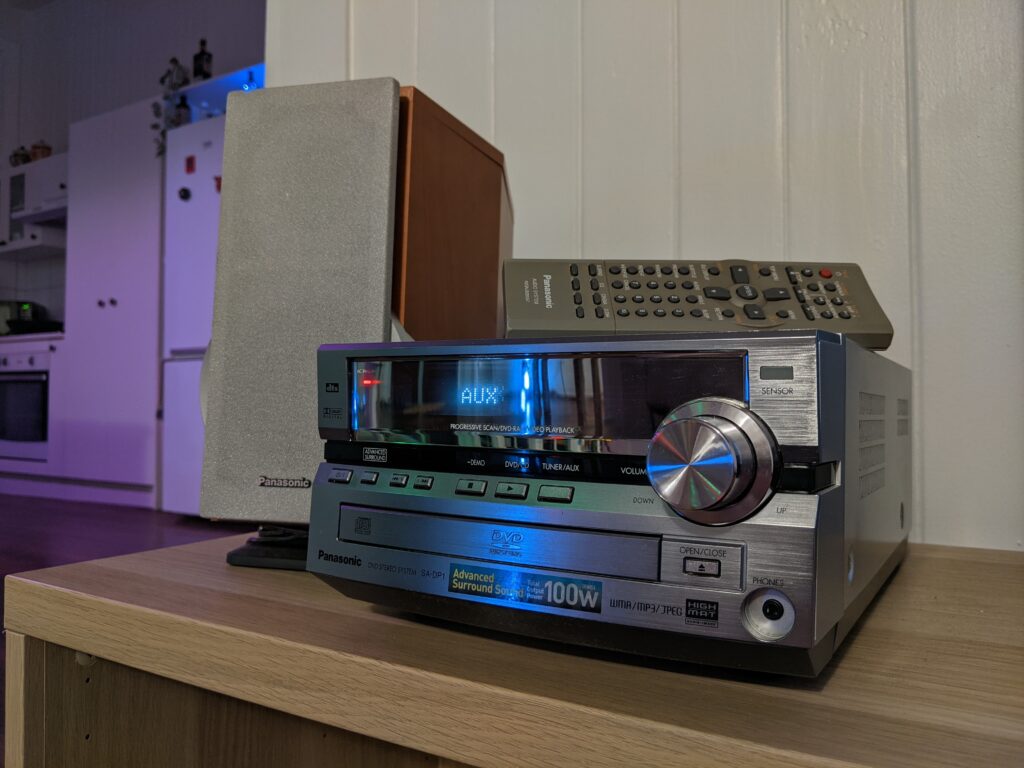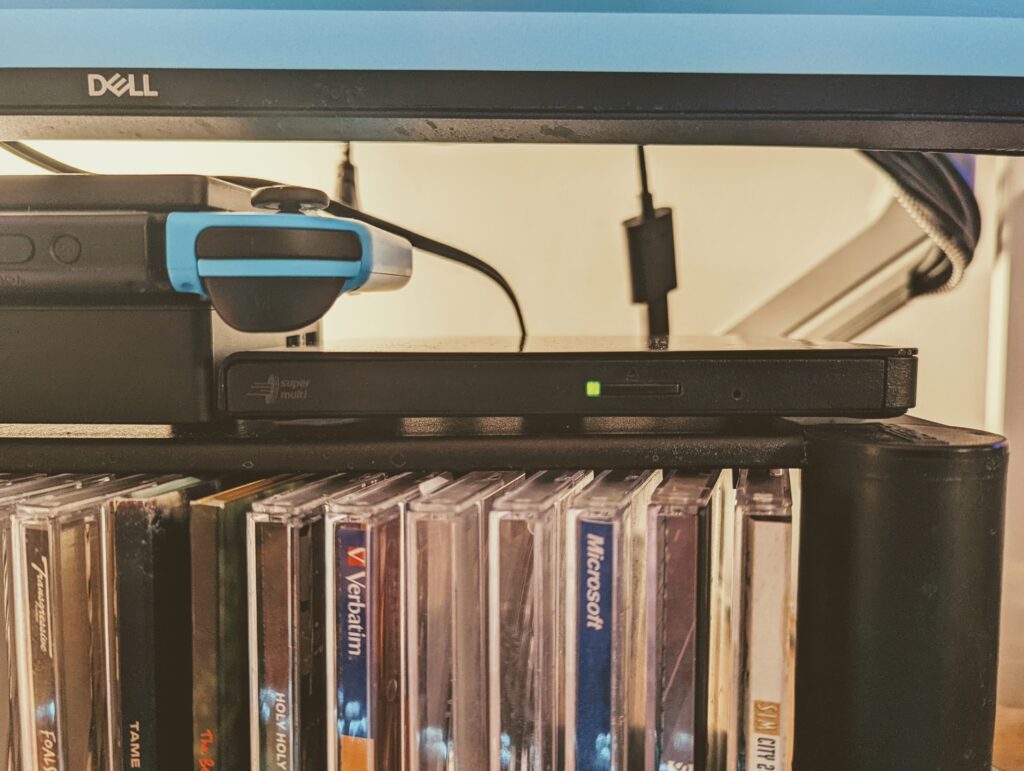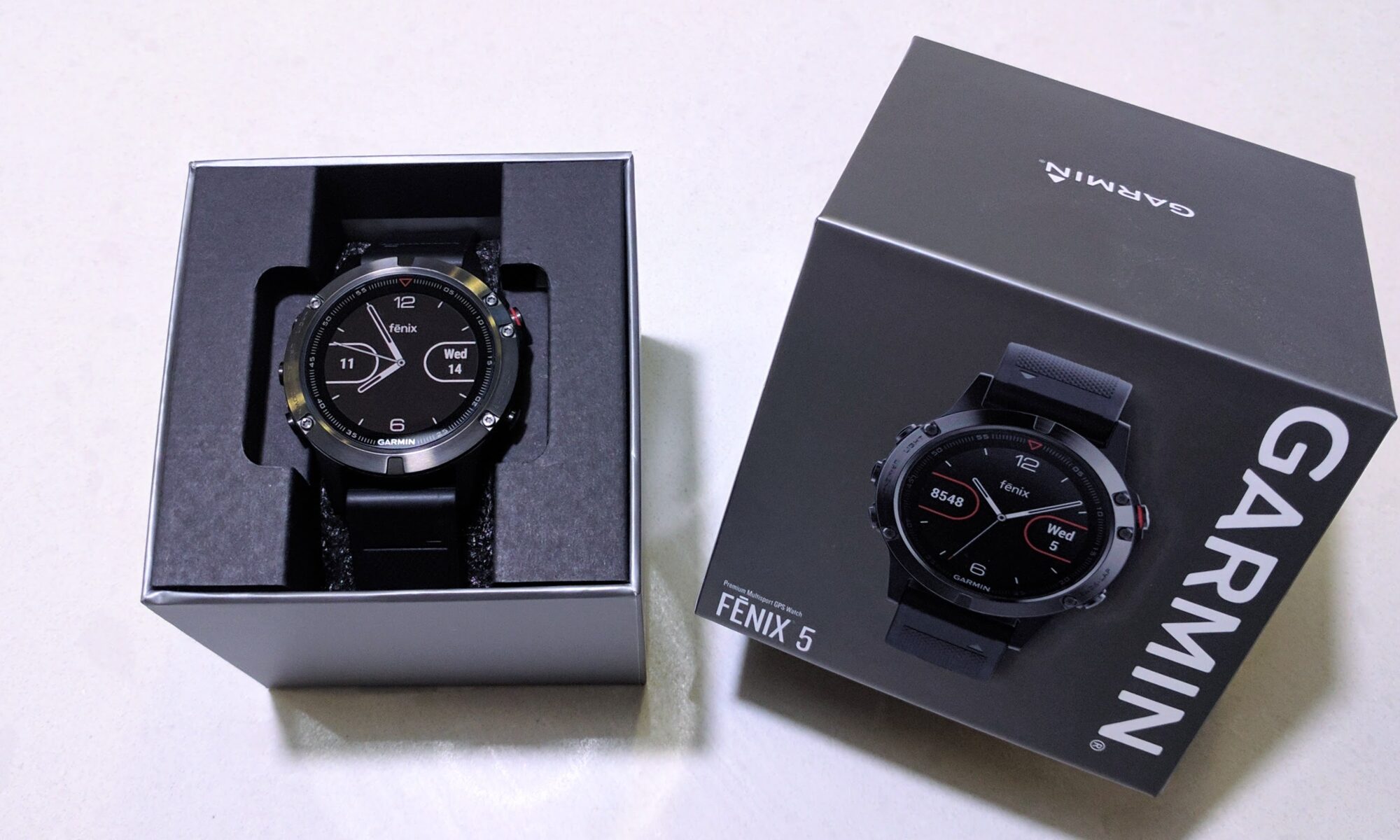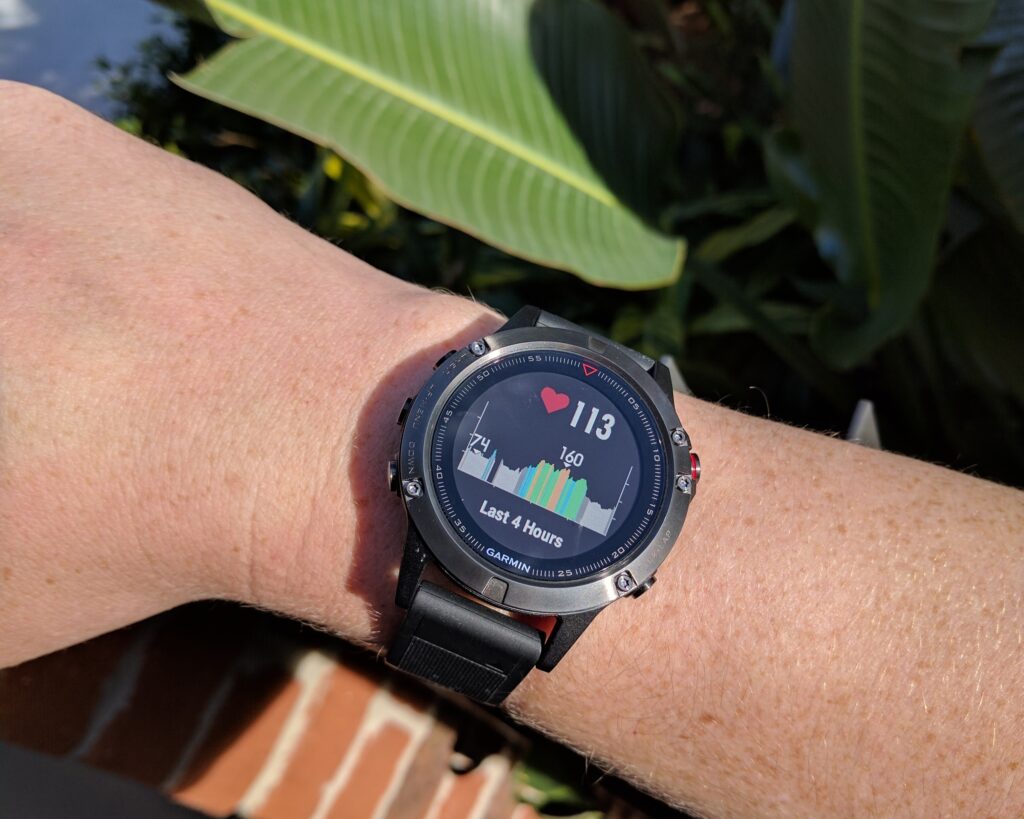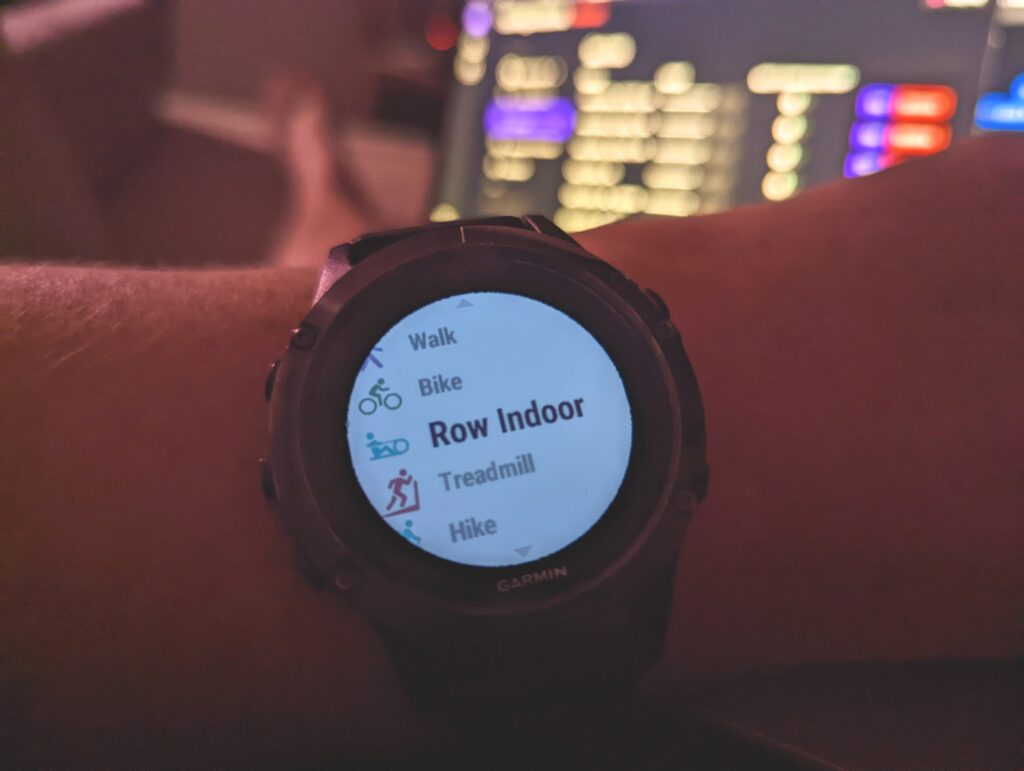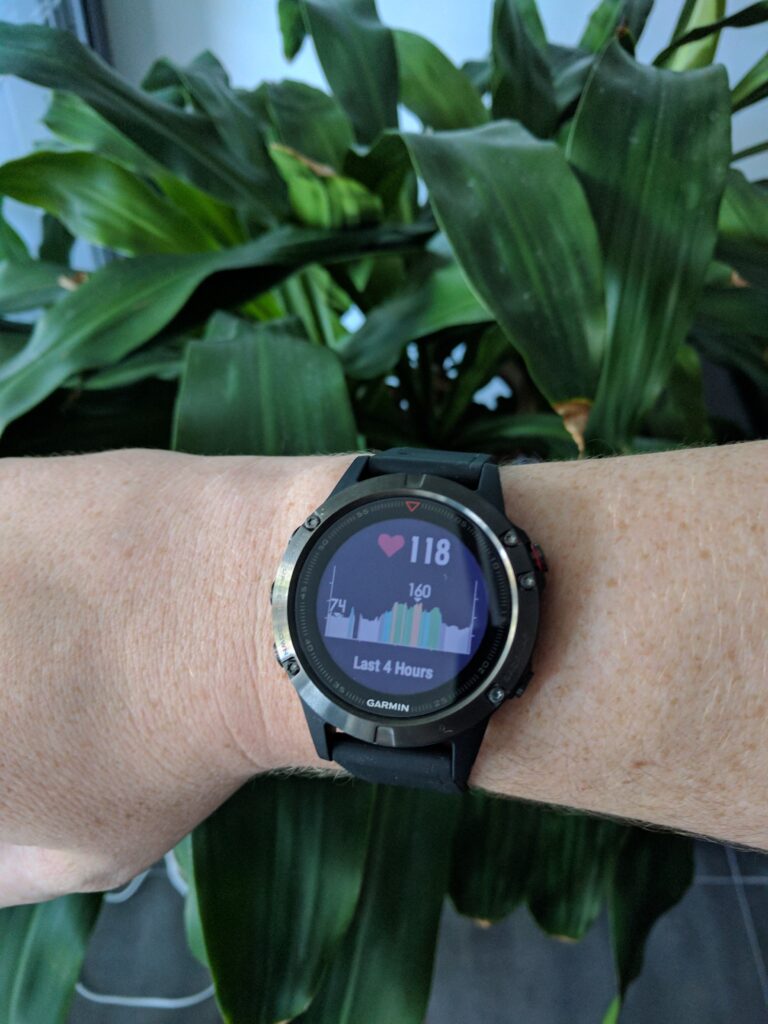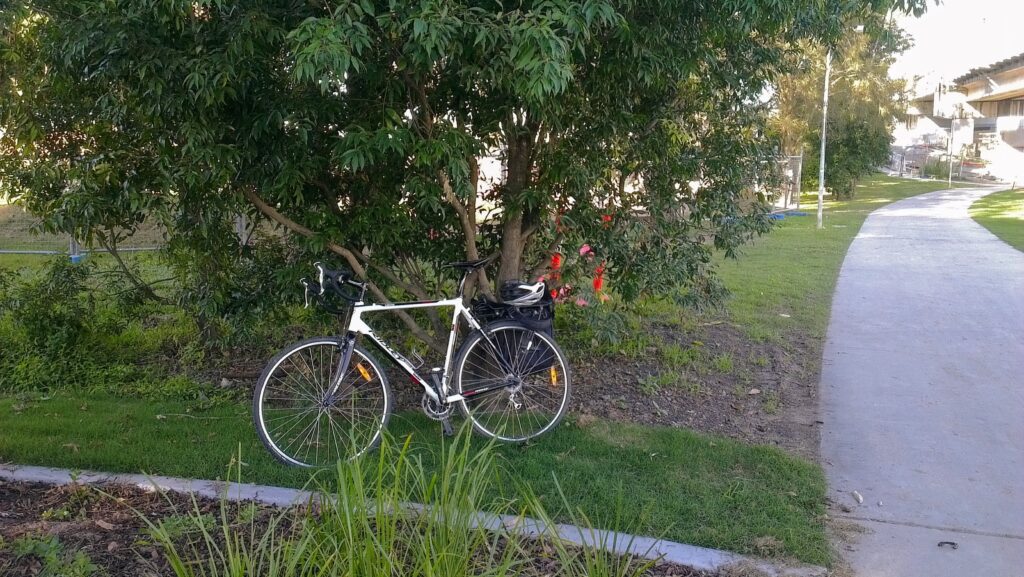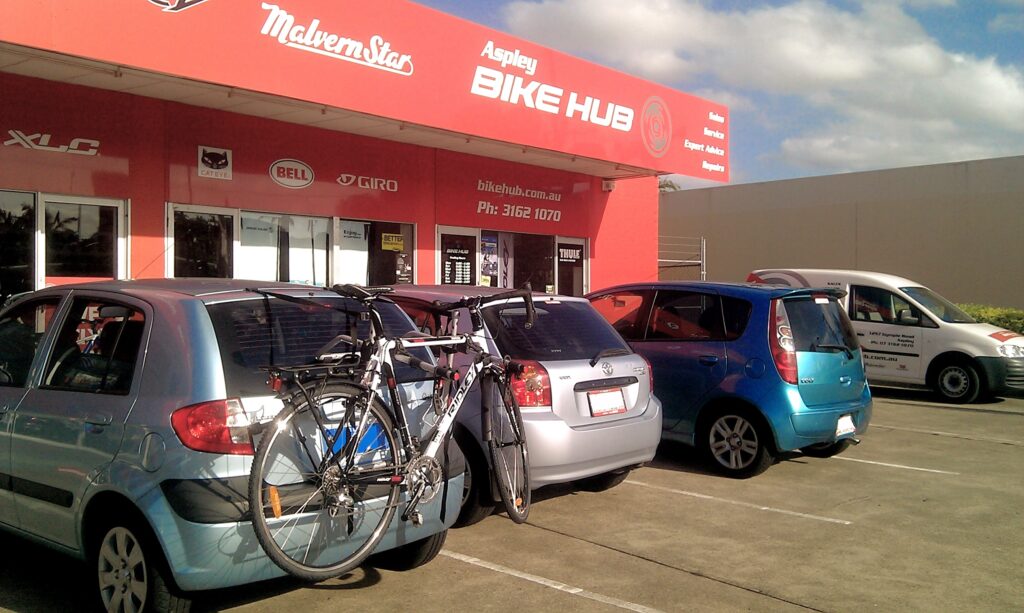I took this week off to unwind. What better way than out in the bush, adjacent a creek, sitting next to a campfire watching satellites spin past?
I’ve wanted to get back into camping for a while now. I figure it’s a good way to get some downtime without spending a fortune on accommodation. The national parks in Queensland are seven bucks a night, which is a cheap weekend away these days, and there’s plenty of them.
The Qld Government has a website listing all their campgrounds, and you can filter by things like toilet availability, whether or not you need a four wheel drive to access.
I was originally planning to drive north but after checking the forecast figured south had less likelihood of wet and I landed on a little campground called Spicers Gap Campground.
It feels like a lot of things went wrong, but I figure the best way to approach them is with a sort of zen mindset. The first omen, I ordered a V2L cable for my EV so I could power my cooktop and assorted bits. It was sent express post last week but Australia Post managed to lose it somewhere in Melbourne. So I picked up a small gas stove instead.
my package did not arrive on timeThen I forgot to bring my water bottle AND the 15l tank of water, both sitting on my kitchen bench. So I had to stop in and get some bottled water.
One cool thing was finding an EV charger on the way at the Queensland Raceway, and it’s completely freeeee. It’s advertised as some ridiculously high speed charger, but I only got about 80 kilowatts, enough to charge the EV up while I ate a sandwich (ham cheese & tomato, stale, from the same fuel station I got the water).
Once I’d topped up to 80% I drove the hour or so south to the campground, only to hit a dirt road up a steep hill with a sign saying “4×4 ONLY”.
Rocked up to the camping area that the website said is most definitely available to 2 wheel drive vehicles.I checked the website and yeah, it says it’s only accessible by four wheel drive. But it’s also listed as a regular 2WD accessible camp. So I checked to see if there were any other access roads (there weren’t), then had a look to see if there were any other campgrounds nearby (kinda), before practising my calm and driving off.
Manna Gum, the nearby camp was only 13 km away, but the drive up through the Great Diving Range and looping back on a long and windy road was 85 km.
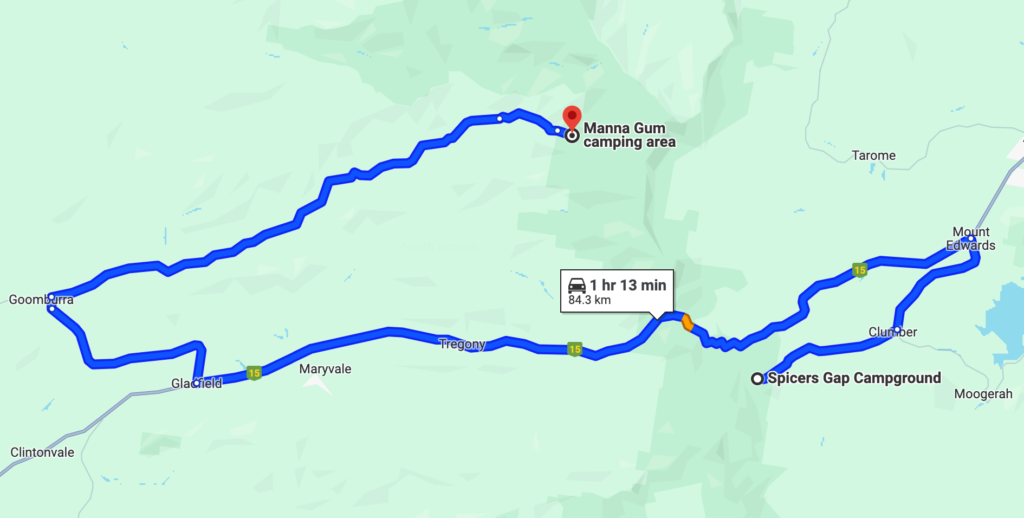
I arrived about an hour later and un-thworped my pop-up tent in a little spot the furthest away from the only other people at the camp.
Some observations:
- There’s no mobile signal (Spicer’s Gap would have been on the cusp of service, so I bought a Telstra SIM specially for the occasion)
- There are cows! Lots of them, just chilling around the place.
- It’s really nice, it’s a eucalypt rainforesty looking place, and I can hear the creek flowing nearby. Can’t wait to check it out.
- It was also much further away than I thought. I went from 80% to 43% battery after the little detour. I know that the cooktop doesn’t use THAT much power, but I’d still feel a bit of that range anxiety getting back.
- Especially because there’s no signal I can’t look up nearby chargers hahahahaaaaa oh no.
It was at this time I realised I forgot to bring the ropes for my tarp, and the eggs for breakfast. Almost like I should have a checklist for this stuff.
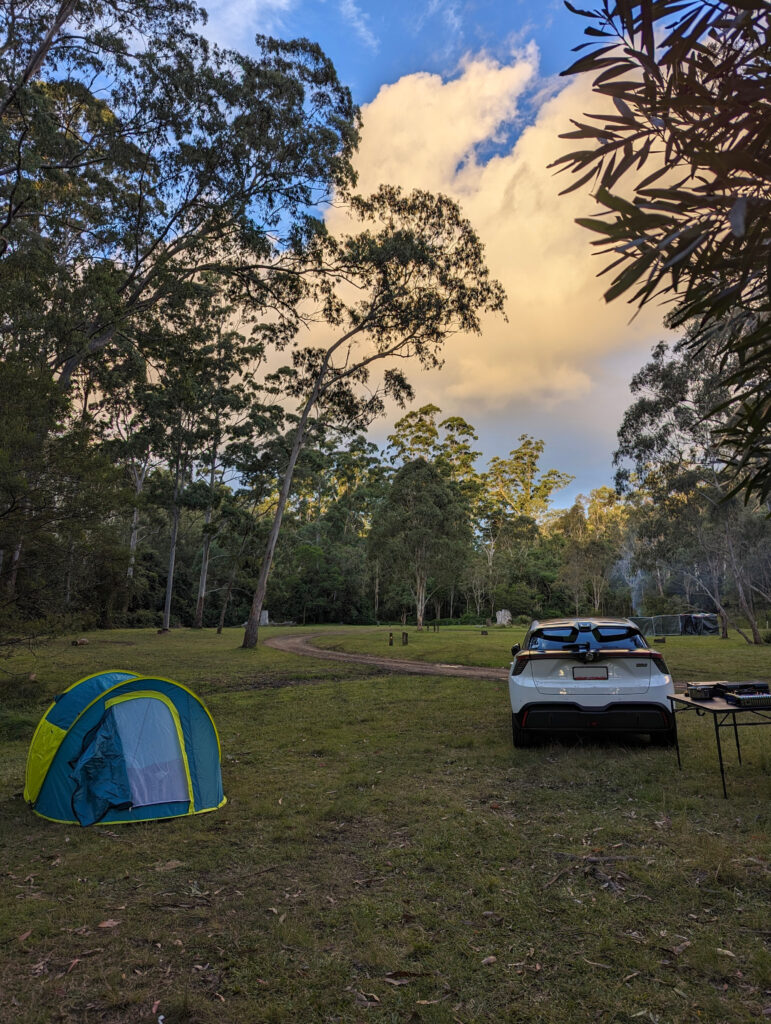
It was a nice afternoon though. I didn’t really do anything other than set up the campsite and sit around watching cows while trying to get the fire going. It took a little bit of coaxing, because I didn’t really have any kindling. But I got one of the thinner logs to catch fire eventually and it kept itself mostly going all night.
When the sun started to go down, a big swarm of cockatoos tore open the sky with their screeching. A couple of wallabies came out of the trees to snack on the grass, and a big fat possum jumped on the ground right behind me which gave me a fright. Can’t get away from them it seems.
So it was only myself and the campers up the hill at the campgrounds. At the other campsite it was only going to be ME all by myself. Shawn asked if I’d get scaredy out in the wilderness on my own, but there’s not really any wildlife to cause troubles here. Maybe overinquisitive cows?
Though when I went to book the original booking the site told me there were a certain number of campsites at the camp, and also that the same number of campsites were available to book, and I realised that anyone could just scrape that data and find campsites with 1 person staying by themselves. And go steal their nickels or whatever tech savvy criminals might do. So probably not great opsec there, so I booked for two people instead of one because I figured it’s not that much more expensive and it might give said crimbinals pause. I’m thinking about mailing the department behind it to suggest they don’t do that any more.
But overall it was fine, and I’m happy to say that my first night was tranquil AF watching the animals, the stars, the fire. Brain off, relaxation.
Dinner was sausage gnocci.
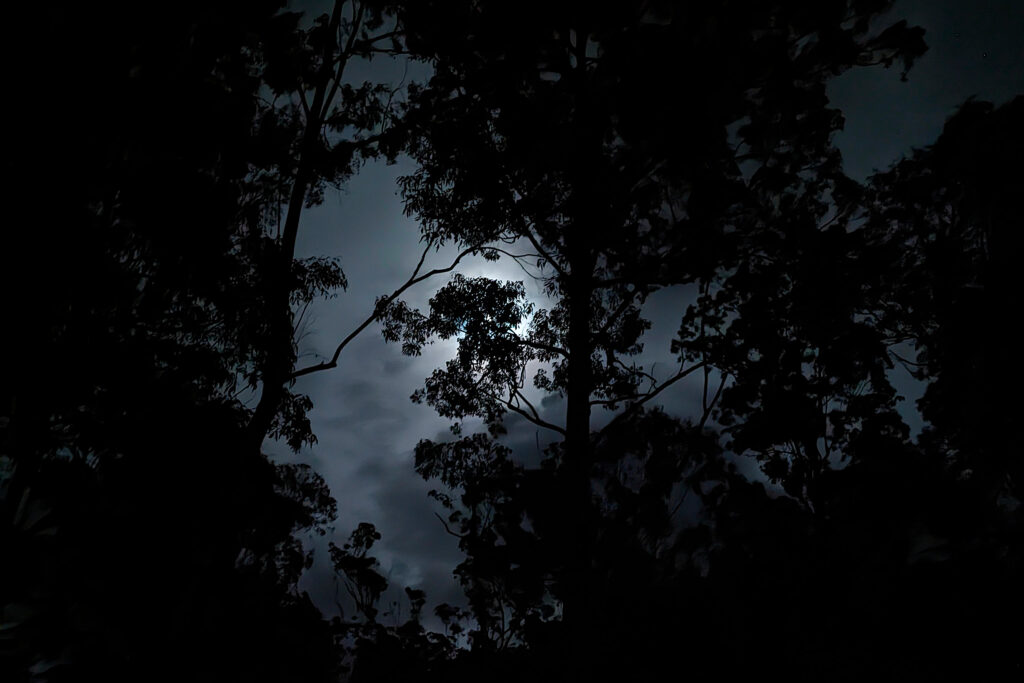
Around 8 o’clock the fire sort of gave up firing and I decided to go to bed to write some blog.
It was that point I realised the tent I bought is too small. It looked alright by the specs. It’s longer than I am, therefore all good? Turns out nah, I can’t lay down and type without both the laptop and my feet brushing the canvas. I think it’ll be alright to sleep in. A bit squishy, but alright. But I think I’m gonna have to upgrade at some point in the future.
So I’m laying here, finishing up, listening to the creek running down the hill and I’m pretty happy.
Also I forgot to bring a pillow.
The next day I woke up to the sound of a strange bird calling and warbling outside my tent. There were a few of them, and I heard them crashing around outside. Or maybe that was the wallabies.
I didn’t look because it was 6 o’clock and I desperately wanted to sleep. Also it was raining and I desperately didn’t want to get wet.
My choice in tent didn’t help there. It’s the Pavillo Cool Mount 2, another cheapy after my last one leaked. This one also leaked, with droplets beading in where the drizzle was pooling, and also where the front zip just wasn’t sealed at all. Also because it’s smaller, I couldn’t get dressed properly without rubbing all over the wet canvas and getting even wetter. I don’t rate this tent highly, I’m just waiting for it to dry out before I take it back and complain. If you have a favourite small tent for big people that can withstand a light drizzle, let me know!
But ultimately the rain was more than I expected and I wasn’t going to do any hiking or exploring in that weather so I packed up and headed back, considering it a very wet dry run for a proper camping trip another time.
The EV made it back to the free charger with 20% battery to spare. I think it ate up a lot of power defrosting the windows, but it also regenerated 3 kilowatts driving down the Great Dividing Range, so I was pretty stoked.
All up, I had a great trip even though it was a bit chaotic. I’m looking forward to doing the next one properly. Let me know your favourite camping spots!
